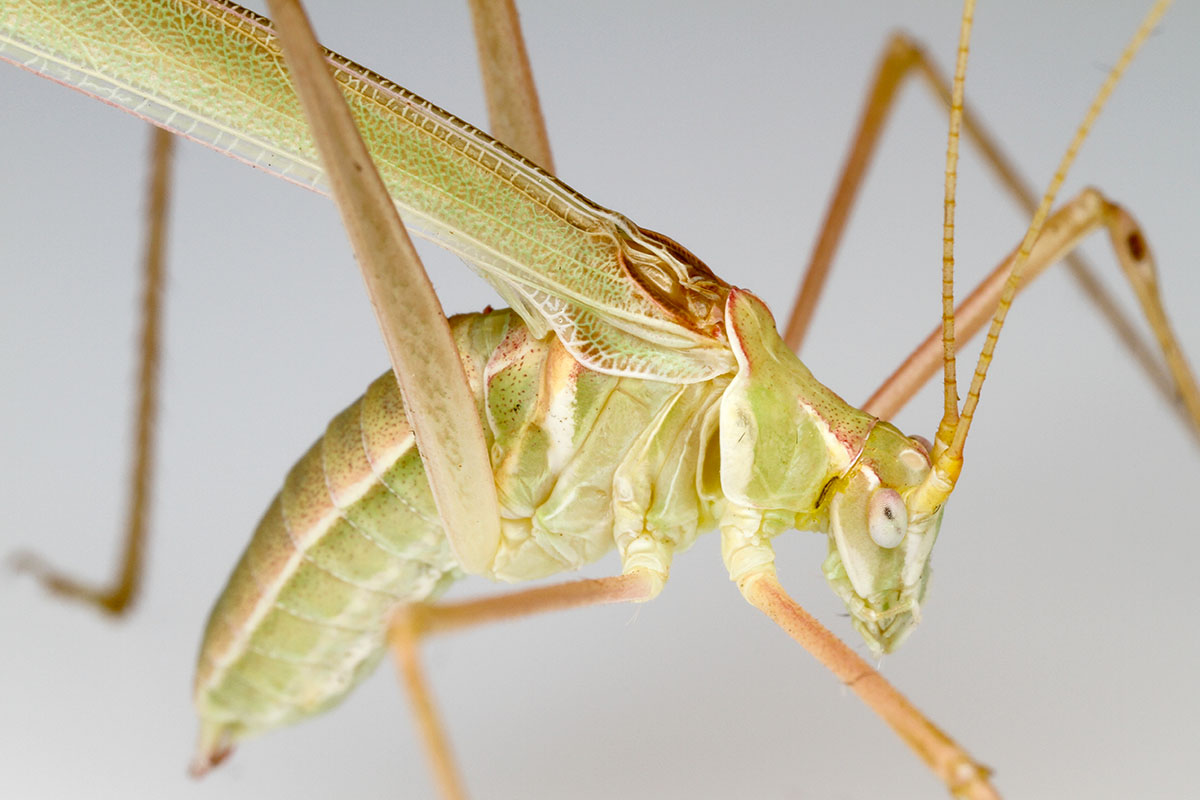
Present-day katydids of the genus Arethaea, pictured here, have the same internal structures as those seen in the fossil.
Photo by Salvador Vitanza
CHAMPAIGN, Ill. - 50 million years ago in what is now northwestern Colorado, a katydid died, sank to the bottom of a lake and was quickly buried in fine sediments, where it remained until its compressed fossil was recovered in recent years. When researchers examined the fossil under a microscope, they saw that not only had many of the insect's hard structures been preserved in the compressed shale, so had several internal organs and tissues, which are not normally fossilized.
They describe their findings in the journal Palaeoentomology.
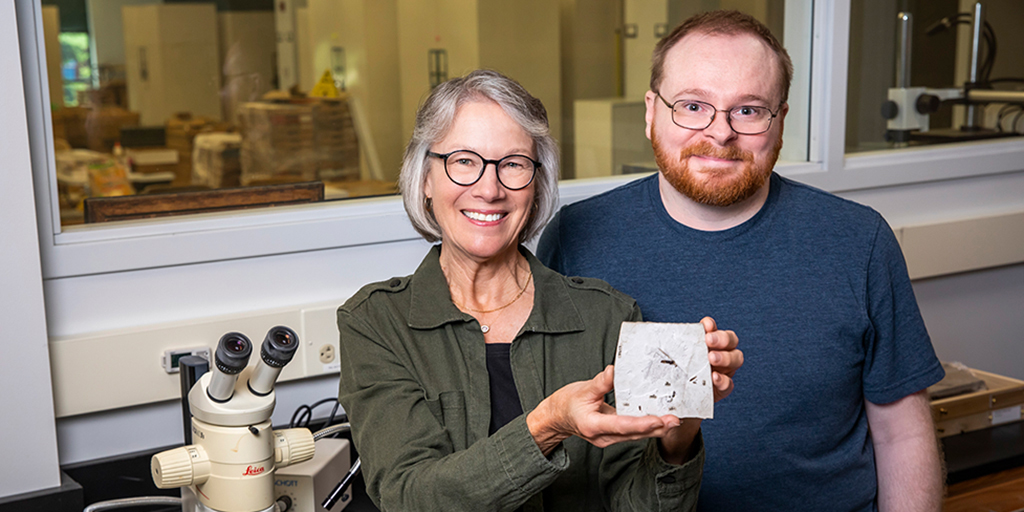
A 50-million-year-old katydid fossil offers insight into the insect's internal organs, says Prairie Research Institute paleoentomologist Sam Heads, right, who named the specimen after Leellen Solter, left, an insect pathologist and volunteer curator of the insect fossil collection of the PRI Center for Paleontology. Solter is holding the fossil of the insect, Arethaea solterae.
Photo by Michelle Hassel
"Katydids are very rare in the fossil record, so any new katydid fossil you find represents a new data point in the evolutionary history of katydids," said paleoentomologist and study lead Sam Heads, the director of the Prairie Research Institute's Center for Paleontology. "But perhaps the most striking feature of this fossil is the really exceptional, remarkable preservation of internal organs - organs that you just don't see in fossils."
The fossil was found in the Green River Formation in Rio Blanco County, Colorado. The formation is vast, extending into three states, and is a famous fossil bed in the western U.S. because the fine-grained shales yield a very detailed record of the plants and animals that once inhabited the region, Heads said.
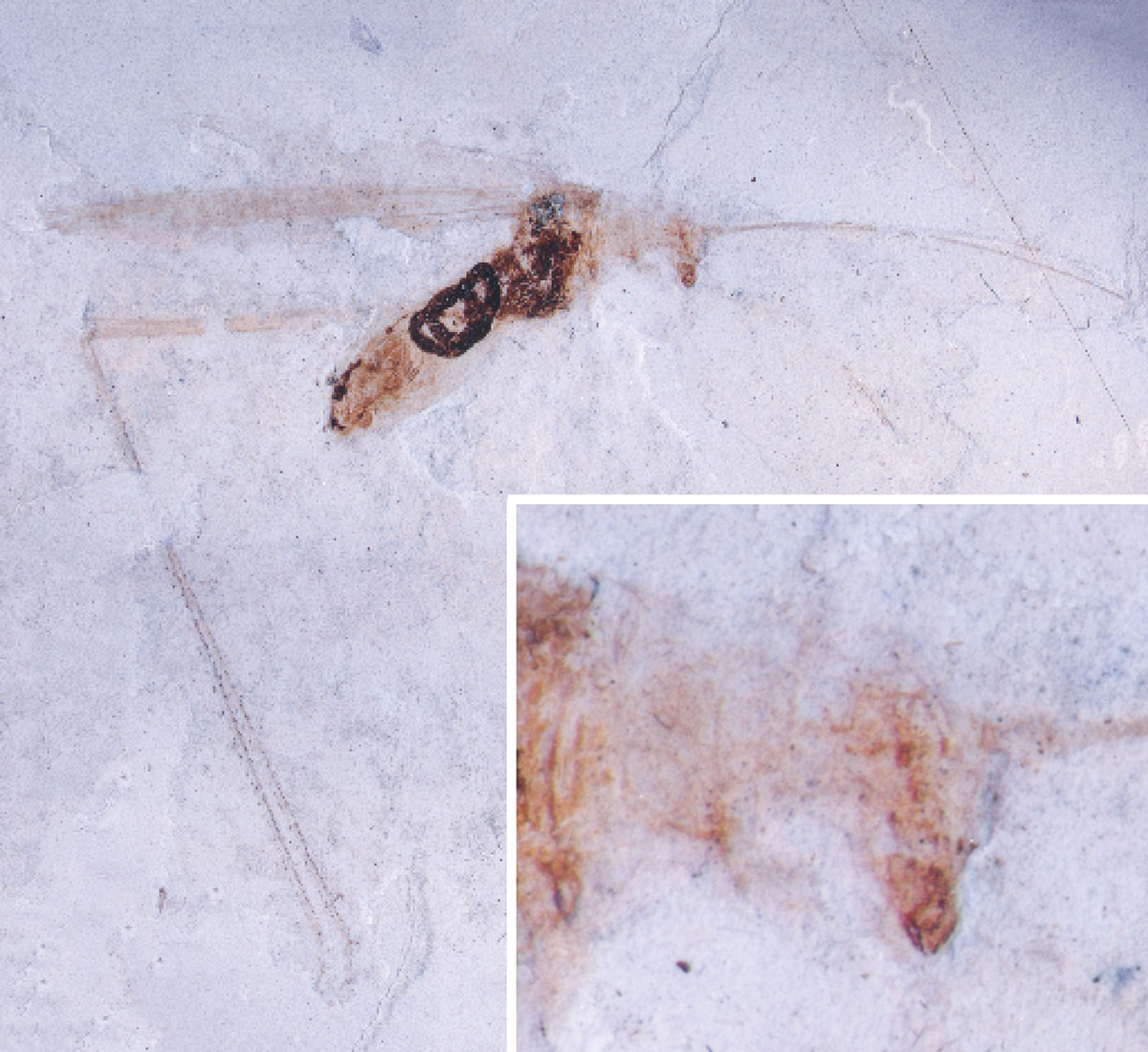
Two views of the fossil insect include the right lateral view, top, and a closeup of the head and pronotum, a hard plate that covers the insect's thorax.
Photos by Jared Thomas
The katydid belongs to the genus Arethaea, a group today known as thread-legged katydids for their extremely slender, grasslike legs, Heads said. The specimen represents a new but extinct species, which Heads and his colleagues named Arethaea solterae after their colleague Leellen Solter.*
"Obviously, having a fossil species of a modern genus is really significant because it confirms the antiquity of this lineage," Heads said. "Now we know that about 50 million years ago, this genus had already evolved and already had a morphology that mimics the grass in which it lives and hides from predators."
The find will help scientists understand how this group of insects evolved and when they developed their unique physical structure, he said.
The rare glimpse of soft internal organs in a 50-million-year-old fossil is also remarkable, Heads said.
"Part of the digestive tract is preserved, a part of the midgut we call the ventriculus," he said. "That's not so unusual; we have other specimens from this location that have gut traces, so I wasn't particularly struck by that."
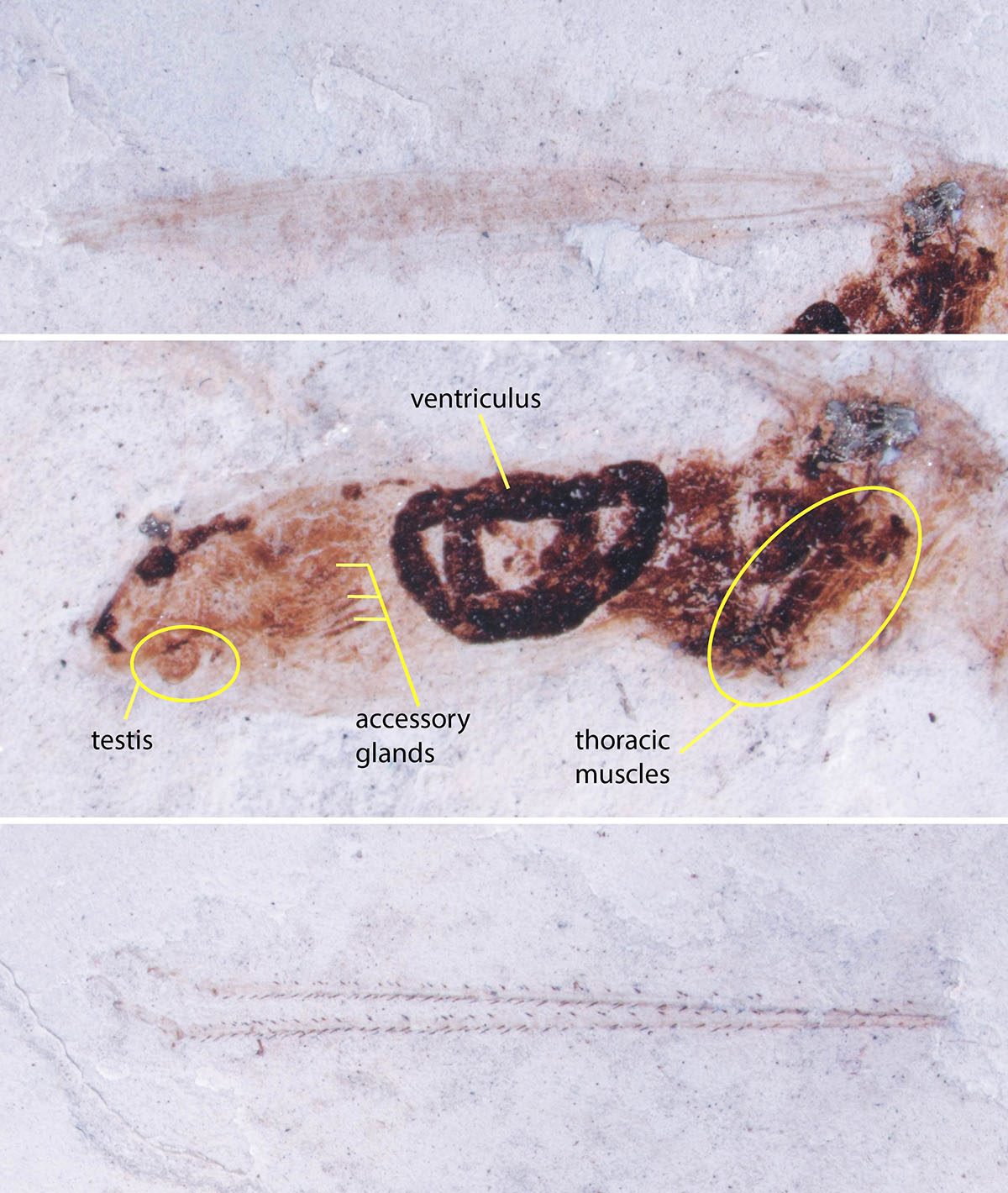
Three views of the fossil insect include impressions of its wings, top; internal structures, middle; and parts of the rear legs, bottom.
Photos by Jared Thomas
But when he looked at the specimen under a microscope, Heads saw evidence of other internal structures that he was not expecting to be preserved. There were traces of the fibers making up thoracic muscles associated with the wings or flank muscles. There was some undifferentiated tissue known as a "fat body," an organ that aids in insect metabolism.
Even more surprisingly, "there are these little tubules that all seem to connect to a round structure - and that can only be a testis and accessory glands that are associated with the testis," Heads said. "That's just phenomenal. I was not expecting to see that kind of structure preserved in a rock compression. I've never seen that before."
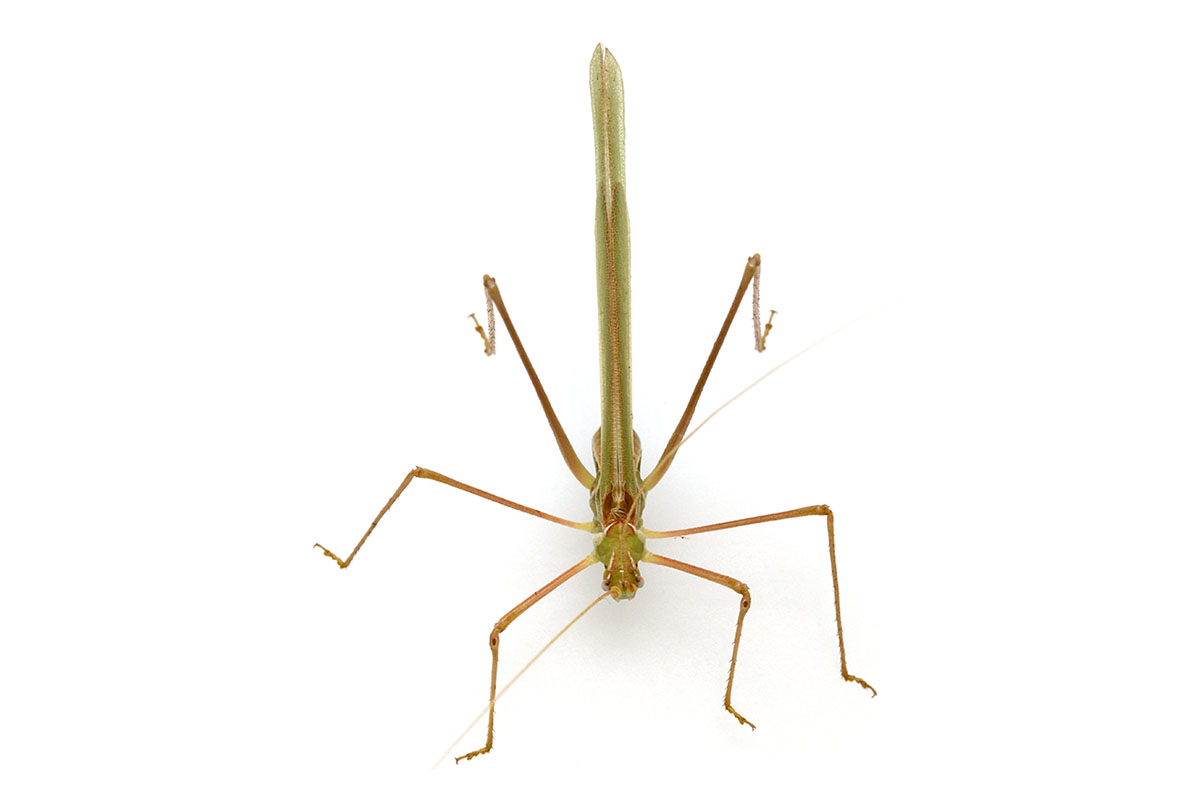
A male katydid of the genus Arethaea.
Photo by Salvador Vitanza
To double-check his analysis, Heads dissected several katydid specimens of the same genus to match what he was seeing in the fossil.
"They look exactly the same," he said. "The testis, the accessory glands and the ventriculus were all the same in the present-day katydids. I was just blown away by it. To my knowledge, this is the first example of this level of preservation."
The Prairie Research Institute is an institute of the University of Illinois Urbana-Champaign.






